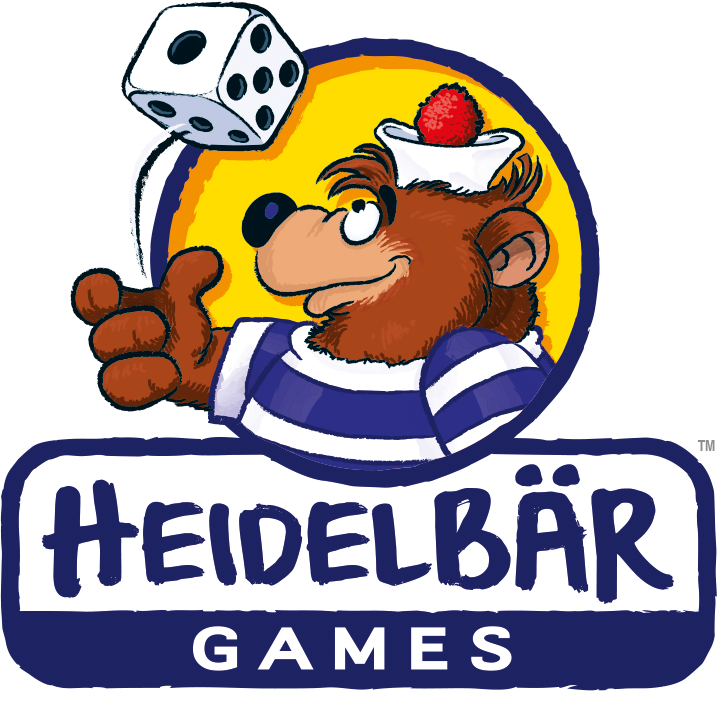
Designer Diary no. 2: The solar system
Development of a four-layer rotating solar system
One of the biggest parts of SETI is the rotating multilayered solar system. It’s a mechanic that’s been in the game since the very beginning, but it didn’t always work the way it does now. In this designer diary, I’d like to show you everything: from how this part of the game works and how it came to be, to how it’s connected to the way we fly around the real solar system and where the inspiration for this mechanic actually came from.
How the game mechanic works
During the game, players can send out space probes using rockets that are launched from Earth, which is located on a component called the solar system. This system consists of four circular layers that rotate counter-clockwise (like the planets). The closer the layer is to the sun, the faster it rotates. Rotation happens continuously throughout the game, creating new planet layouts and so-called “ideal launch windows.” When players have a probe deployed in Earth’s orbit, they can move it to adjacent tiles by paying energy. In this way, a player can fly their probe around the solar system where it is most advantageous for them at the moment, or to a location where they have a specific mission that needs to be completed, for example.

(Animated gif showing the rotation of the solar system and the movement of the probes)
Then the player can use the probe to explore the planets, their moons, or even asteroids and comets. Ideally, they should plan this journey so that their rocket flies over as many other objects as possible, as each object (like a planet or comet) they fly through during this movement will gain them “publicity” — a useful resource in the game. This represents a kind of light exploration of the object in question, which is also standard for real space missions.
In fact, NASA and other space organizations always plan missions to the planets in our solar system in such a way that the primary objective is to make the journey as short as possible, so the most suitable launch window is sought. Another important objective is to visit as many other objects (planets and moons) as possible during the journey. If the probe approaches the planet at a suitable angle, it can give the probe a so-called gravity slingshot, which saves the probe energy and gives it the necessary speed (we’ll talk more about gravity slingshots in the game later).
Another bonus of approaching planets is a probe can do light, quick research along the way, like taking pictures of the planet or its moons, measuring the atmosphere, and doing other studies. In short, it’s good to take advantage of the probe being so close to a planet, because it’s not that common. For example, in SETI, if a player flies their probe to Neptune but also manages to move through the planets Mars and Jupiter, they get three publicity instead of just one.
Publicity in SETI symbolizes something like popularity among people, and players can get grants for it that are helpful for improving their technology. So for the solar system, I took a lot of inspiration from real Space flights and wanted to bring that into the game. I wanted the players to make similar decisions as the engineers at NASA do, and I wanted the same laws to work there.
:strip_icc()/pic8131572.jpg) (Photo of solar system from March 2024)
(Photo of solar system from March 2024)
Gravity slingshots, orbital satellites, and landing
Another element in the game is the gravity slingshot. The cardboard layers of the solar system have different cutouts that shift, and players can take advantage of this shifting to move their probes horizontally in the direction the system rotates without spending energy. Also, if the position your probe is currently on gets overlapped by another layer of the cardboard, it automatically bumps your piece forward a space. This can be helpful if you’re stuck in an asteroid field, for example, as it normally costs an extra energy to fly out of them. Players can also strategically plan to use this gravity slingshot repeatedly as they fly to a distant planet, visiting as many other possible planets along the way to make their mission more efficient.
Upon reaching a specific planet, players have the opportunity to place their probe in orbit around it to earn a reward for the game, or they can instead choose to land the probe on the planet surface (or send it into the atmosphere of gas giants that cannot be landed on) to retrieve valuable samples and data. All orbiting satellites and all landings are recorded and can be further manipulated using the cards, but I won’t go that deep in this article.
Players can even land on the largest moons in the solar system, including the four famous moons of Jupiter discovered by Galileo himself in 1610, Io, Europa, Ganymede and Callisto. Other moons include Titan, Triton, Enceladus and even Mars’ smaller moons of Phobos and Deimos. These moons have a lot of rich and varied in-game rewards, but they are harder to reach because players need special technology to land on the moons. The rewards from landing probes on moons are also much more likely to include finding signs of alien life.
At the moment, there are many real-world candidates that we as humanity want to explore. There are already missions planned to the moon Europa, for example, which is expected to have a huge ocean of water under a kilometer-thick crust of ice that should be deeper and larger than any ocean on Earth. The actual probe that will investigate the presence of life on Europa is called Europa Clipper, and you can even find a mission card for this mission in the game.
Optimizing flight paths
Always before a flight and even before sending a probe into Earth orbit, players need to do a little research on what is available at the moment and what the situation will be like if and when the solar system will rotate. You need to assess that situation and see if, for example, a launch window is appropriate or if the situation is unfavorable. Several factors have to be evaluated, namely which planets are easily reachable now and which are not, whether the ones that are reachable are interesting for the player, whether there are asteroids on the way that cost more energy, whether a player has any quests for specific planets, or how much energy the player has left and whether they can reach the destination at all. As you can see there is a lot to consider here and flying optimally is not easy at all.
:strip_icc()/pic8131612.jpg) (Photo of the oldest prototype solar system)
(Photo of the oldest prototype solar system)
This is a simplified description of this mechanic, and now I would like to share with you how it came to be created. In the picture above, you can see the first prototype of the solar rotating system. It’s from 2018, back when I started developing the game. My first iteration worked a little differently, but you can already see there that I wanted to make some spinning layers with planets and asteroids on them. This version was much more strict and unforgiving, however. The goal was to send the probe at the right moment, and then the probe would just “fly” itself across the universe. So every time the solar system rotated, it moved to the next layer and either hit something or not.
At the time, I wanted to put the emphasis on planning space missions so that players had to calculate exactly where a planet would be in X number of turns at the very beginning. This was very, very difficult for players, because they had to plan the mission quite a long time in advance. It wasn’t easy for most players, because they couldn’t really imagine how the planets would circle. As a fix, I invented a measuring device for this, which you just put on the probe and it immediately showed what the spacing of the planets would be after the solar system rotated. Luckily, I took a picture of this measuring device (you can see it in the photo above), which is no longer in the game. Now I see it as kind of patching something that didn’t work very well, but I didn’t have much experience with game design back then. I’ve since learned it’s important to fix the initial problem, instead of just patching it up.
Luckily, after some time I set about redoing the mechanics of how the whole solar system works, and it has actually stayed the same to this day since that 2019 redo. There’s still choice and finding the perfect opportunities for when to fly out, but it’s not nearly as crucial and the player has many decisions on where to fly and how to maneuver, and it’s much better and easier to work with how the solar system rotates.


:strip_icc()/pic8133153.png)
:strip_icc()/pic8131613.jpg)
:strip_icc()/pic8131614.jpg)
:strip_icc()/pic8131618.jpg)
:strip_icc()/pic8131621.jpg)
:strip_icc()/pic8131627.jpg)